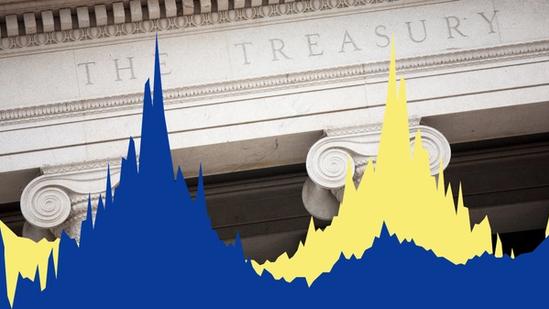How Does Private Equity Compare to Investment Banking?


The differences between private equity and investment banking
- Private equity investing and investment banking are fundamentally both involved in buying and selling businesses
Private equity investing and investment banking are fundamentally both involved in buying and selling businesses. However, there are differences between their business models, how they make money, and what they offer as a career.
Private equity in a nutshell
Private equity companies manage pooled investment funds that they use to buy (usually controlling) stakes in other companies. Sometimes private equity firms buy whole companies using their investors’ funds.
A private equity firm works with the business it has a stake in or owns to make it more profitable, so it can sell it on for more money than it paid for it in the future, known as “exiting.” This is how private equity investors make returns.
Venture capital is also a type of private equity. It involves investing in startups or other early-stage businesses that are predicted to grow in the long term.
Private equity invests in companies across sectors where they expect high growth, from finance and technology to healthcare and beyond. Some private equity funds also invest in alternative assets, such as real estate, infrastructure – like bridges, toll roads, airports, or power plants – and agriculture.
What private equity firms do
The key activities involved in private equity are buying companies, restructuring and improving businesses, and selling companies for a profit.
Private equity firms buy companies to boost them with extra capital and new strategies to help them outperform. Using financial resources and in-depth knowledge of the company and its sector, private equity funds advocate for changes in the companies they buy to drive growth. The aim is to take a company doing well and help it become better.
Private equity funds buy companies in several ways. One is the buyout. This involves acquiring a whole company.
Alternatively, private equity firms can do a ‘carve out’, where they buy a part of a business that has been put up for sale by its parent company and overhaul it.
There is also taking a company private – known as Take-Privates – where a publicly-traded company is bought and its shares are delisted from a public exchange before undergoing business transformation.
Finally, there is the secondary buyout. This is where a private equity firm purchases a company from a rival private equity company with a view to making its own style of improvements ahead of an eventual sale. Secondary buyouts are a form of ‘P2P’ (Private-to-Private), which refers to the exchange of companies or assets between private entities.
Private equity companies will often get heavily involved with businesses they view as having the so-far untapped potential to perform above their current level. A private equity firm’s role in this case is to steer it through a transition of rapid performance improvement.
The company may need a cash injection, or some help refinancing or paying off its debt burden. The private equity firm may cut staff to lower costs or wind down certain operations.
The aim of a private equity firm’s restructuring is to take the company into the next stage of its development, opening up the way for it to become even more profitable and successful.
Private equity firms consciously consider the full investment cycle at the point they buy it, including considerations around the future exit. This is a key part of the investment strategy.
Private equity firms seek out buyers interested in the restructured and now more profitable company, or they will list the company for sale on the stock market in an initial public offering.
Investment banking in a nutshell
Investment banking provides services to corporations, governments, and other institutions. Investment banking is not typically used by ordinary retail investors.
Often investment banking will be a division of a wider bank. The role of investment banking is to act as a middleman between those who want to invest and businesses seeking investment.
What investment banks do
The main services investment banking provides are mergers and acquisitions (M&A), underwriting, sales and trading, and advisory services.
Investment banks have several roles when companies merge or are bought or sold. One service is to give advice ahead of and during the deal. This includes providing expertise in areas such as company valuations, due diligence, capital raising, investor communications, and helping with negotiations.
Investment banks also carry out the transactions involved when all or part of a company is bought or sold to finalize the deal, known as deal closing. This involves a final check of all the terms and conditions, and making the client aware of any potential future issues.
Finally, investment banks help with the post-merger or acquisition integration of the companies involved.
Underwriting in investment banking is where the bank raises capital for a client, which could be an institution, a company, or a government.
The investment bank raises the capital from investors via the sale of stocks, sometimes via an initial public offering (IPO), or bonds. Alternatively, the bank might buy the stocks or bonds first, and then market them to investors.
Investment bankers will be involved in the planning, timing, and demand of the capital raising, as well as how the sale to investors occurs.
Sales and trading within an investment bank are often referred to as ‘market making’. Market makers provide liquidity to the market by buying and selling securities such as equities and bonds.
On the sales side, investment bankers will promote products to clients with the aim of getting them to place trades within the salesperson’s investment bank.
Traders, on the other hand, act on behalf of institutional investors that are clients of the investment bank when buying and selling securities and they often trade with traders from other firms.
Key differences between private equity and investment banking
Private equity business model
Private equity firms raise capital in pooled funds from outside investors, which they manage and use for acquisitions. Often debt is part of transactions, from money borrowed to finance the purchase.
General partners (GP) are responsible for running the private equity fund. Limited partners (LP) provide the capital but don’t have much involvement in how the fund is run.
Investments by private equity funds are often for a period of 4-7 years, before the exit, when the company, or part of it, is sold.
Investment banking business model
Investment banks make money by providing advice on financial transactions and by trading securities. They charge clients either fees or commissions for their services.
For underwriting, for example, an investment bank will often charge a flat fee. Whereas for market making it will usually charge a commission.
Investment banks also buy and sell securities on their own behalf with the aim of making a profit.
Private equity work environment
Private equity firms are often smaller than investment banks, though there are some large publicly traded private equity companies, including EQT.
Work in private equity companies, especially investment-related work, is often project-driven with each project lasting 7-10 years or more. Once a private equity firm invests in a company, using investor funds, it will work closely with management to future-proof the business through increased efficiency and cost-cutting.
Exciting opportunities and an interesting career await potential candidates for jobs in private equity. Most often you’ll start as a junior associate or analyst to learn the ropes. This typically requires at least two years of experience within the banking industry, a bachelor’s degree in finance, accounting, economics, or other related fields, and strong analytical skills.
However, don’t be put off if you are considering private equity from a start outside finance – some private equity firms, like EQT, prioritize industrial experience, where they are keen to hire based on an excellent understanding of any one of the many industries they invest in.
Private equity can be a challenging but rewarding career. Pay in private equity typically starts at around £70,000. With career progression compensation moves to salary, plus carried interest. Carried interest is a share of profits earned by the firm.
Investment banking work environment
Investment banking is fast-paced and transaction-driven, with long hours – but it can be very fulfilling as it gives you the chance to help and guide clients through a variety of complex financial issues.
Investment banks tend to be large organizations. Global investment banks include JPMorgan Chase, Goldman Sachs, Morgan Stanley, and Citigroup.
Investment bankers spend a lot of time meeting with clients to generate business. Good networking and communication skills are essential alongside financial expertise.
Roles labeled ‘investment banker’ range from entry-level to a high-level position like executive vice president. The compensation structure is typically a base salary plus bonuses.
Private equity risk and reward
Private equity, like all investing, comes with some risks to investors’ capital. The skills of the private equity fund’s manager, the soundness of the firm’s investing strategy, and the economic environment all come into play. Investors can get back less than they put in, but there is also the potential for significant long-term rewards.
The minimum to invest in private equity – which is known as an alternative asset class – has historically been high. However, there are now more opportunities for investors to access the asset class at thresholds as low as £20,000. There is the potential for high losses, but also outsized gains.
Private equity investors must also accept liquidity risk, tying up their money until a project’s exit.
If the investment is in a younger company or start-up, private equity investors also face a type of market risk, where the business they are backing may fail.
Private equity investment performance is measured in three ways: using the internal rate of return (IRR), the multiple of money (MoM), and the public market equivalent (PME).
IRR measures cash flows and net asset value. MoM is the total cash outflows divided by the total cash inflows. PME compares a private equity investment’s performance versus if an investor had invested in public markets.
Investment banking risk and reward
Risks involved in investment banking include market, credit, operational, and liquidity risks.
Losses can arise in investment banking due to market changes in currency rates, inflation, and interest rates. There is also the risk that the investment bank’s borrowers or counterparties default, namely credit risk.
Operational risk involves the failure of the investment bank’s internal processes. Liquidity risk in investment banking typically results from the mismatch in maturities between the bank’s assets and liabilities.
Fees, risk, and liquidity are drivers of the performance of investment banks, as measured by how efficiently they can acquire assets, make investments, manage risk, and turn a profit for shareholders.
Final thoughts on how private equity and investment banking compare
Private equity investing involves buying companies, future-proofing them by restructuring them and then selling them on for profit. Investment banking also involves buying and selling companies but its role is more about raising capital for the deal and advising on it. While private equity projects are usually longer-term, investment banking deals are done faster.
If you’re looking for a career in private equity or investment banking you’ll have an advantage if you have strong analytical skills, and this is true of both fields. However, investment banking generally requires more of an appetite for social networking.
Finally, while private equity investing has a higher risk than mainstream investing, there is the potential for higher returns. Alternatively, in investment banking, the risks are mainly related to the management of assets, liabilities, and the strength or weakness of counterparties and financial markets.
ThinQ by EQT: A publication where private markets meet open minds. Join the conversation – [email protected]




